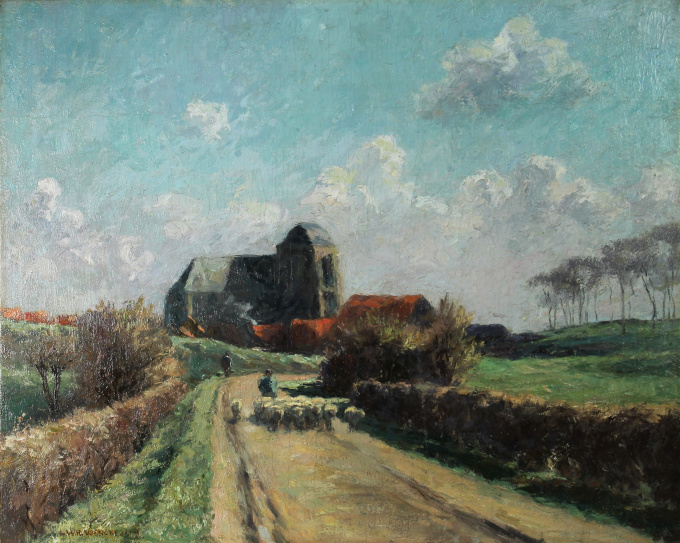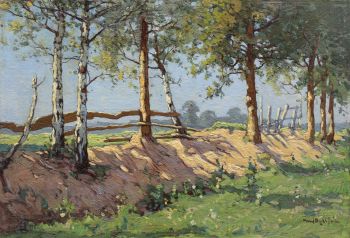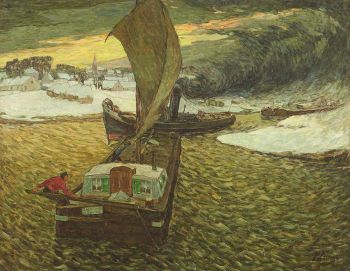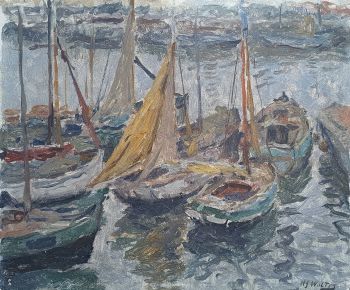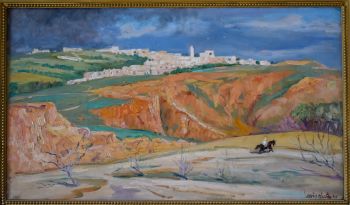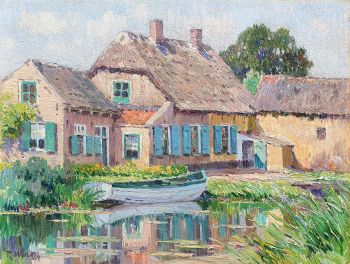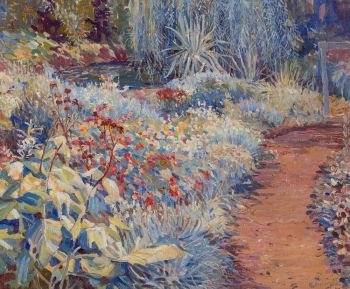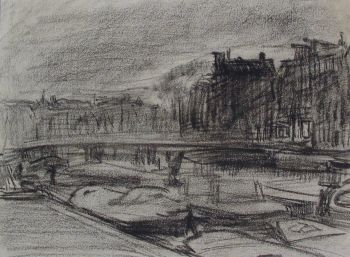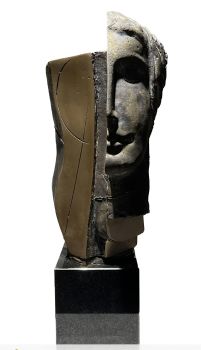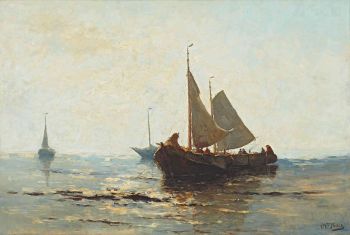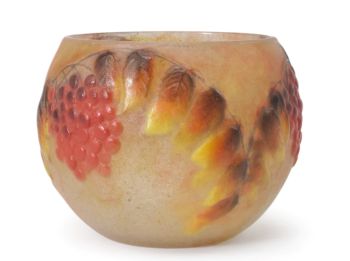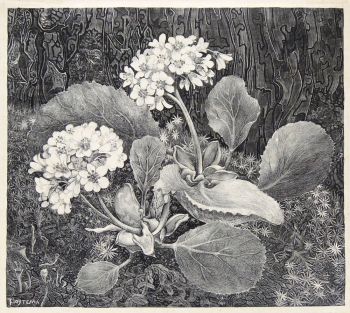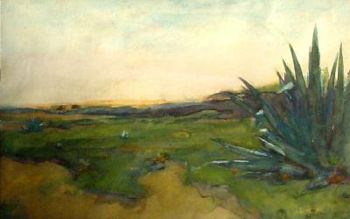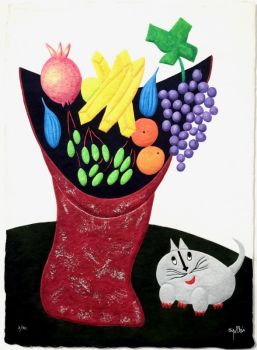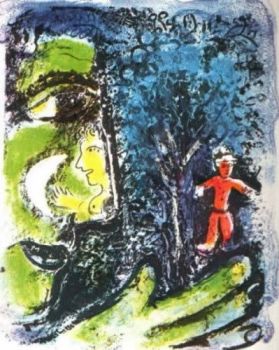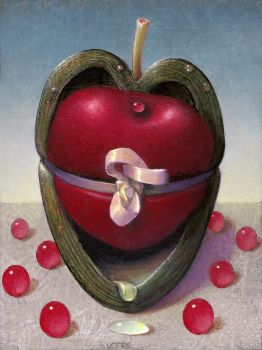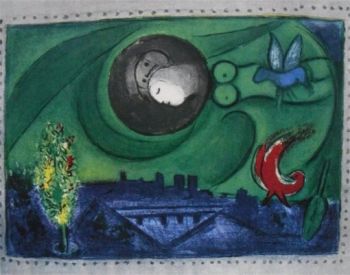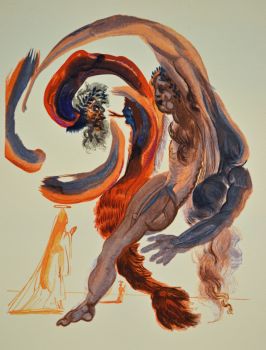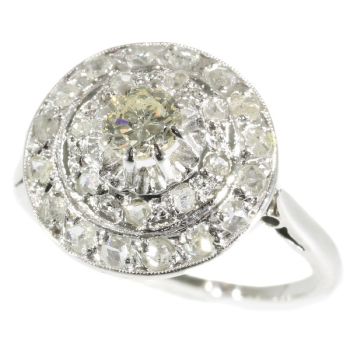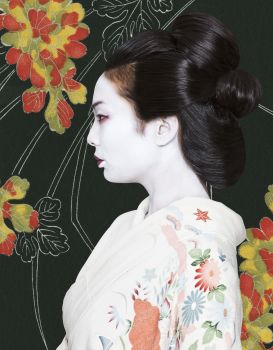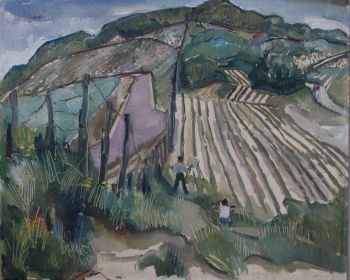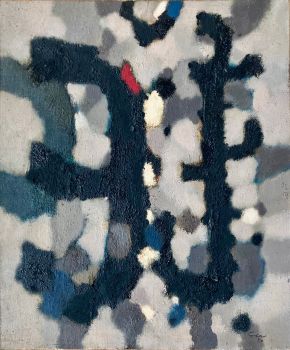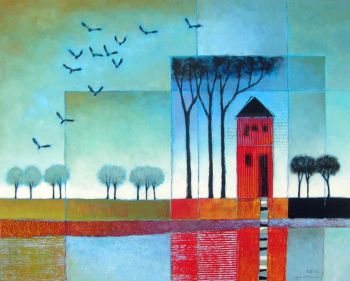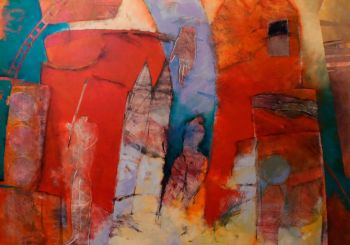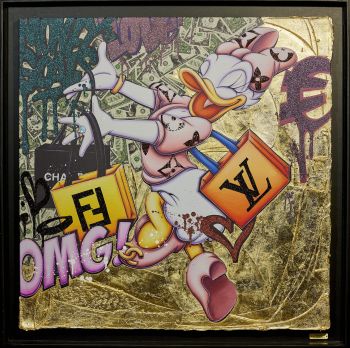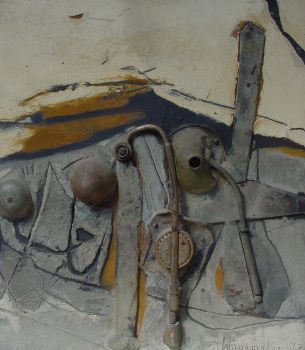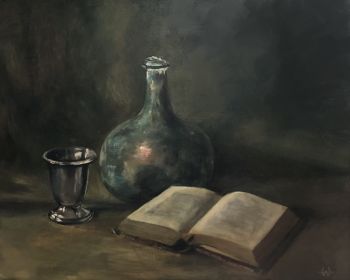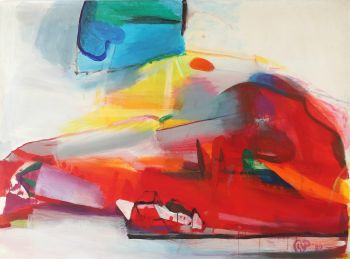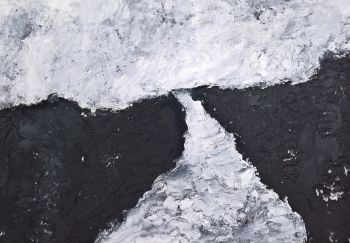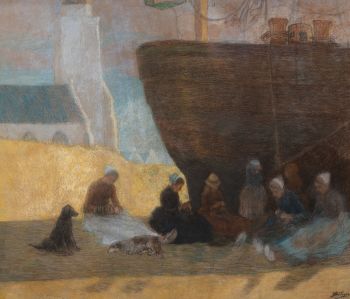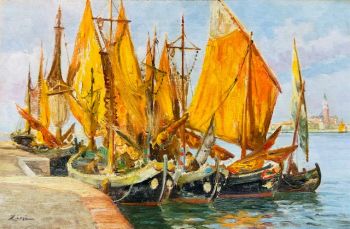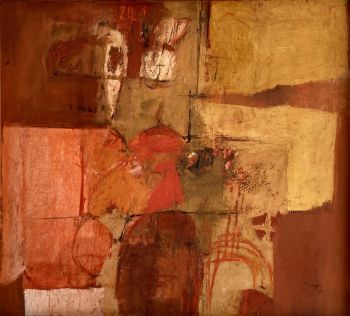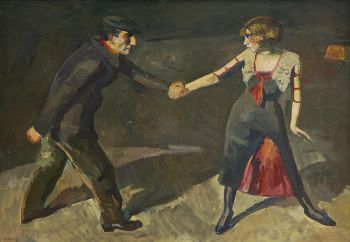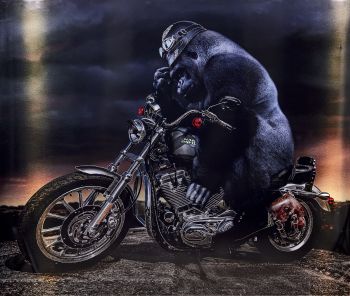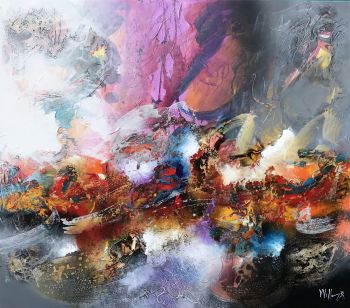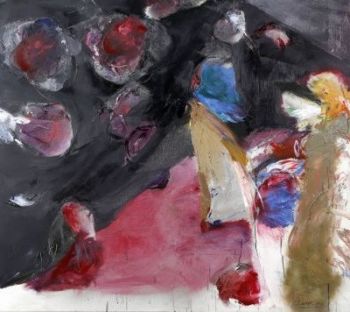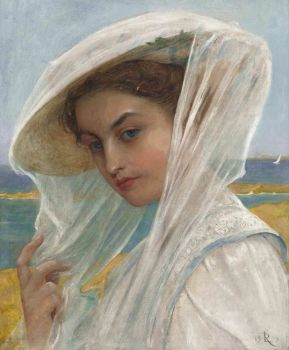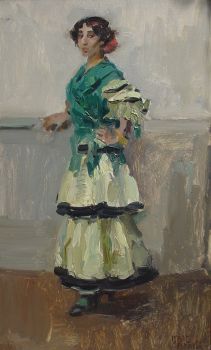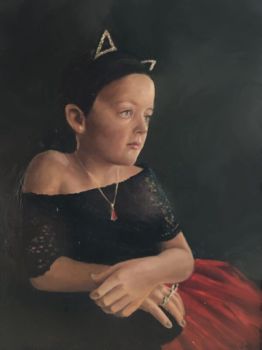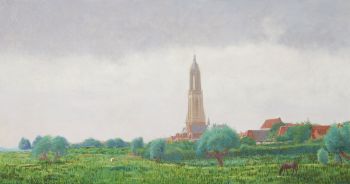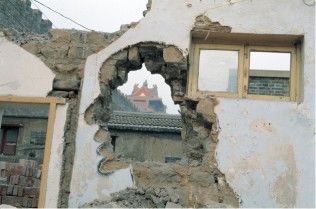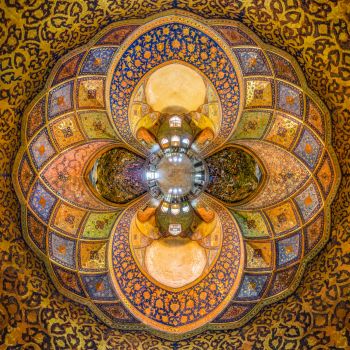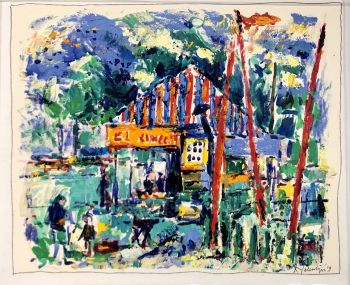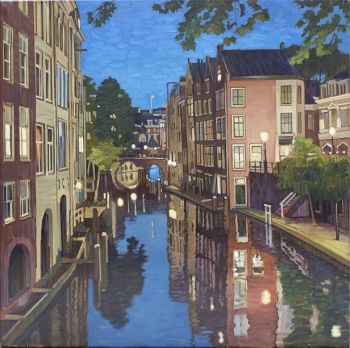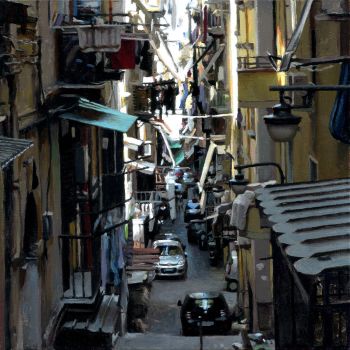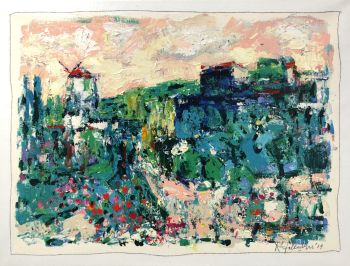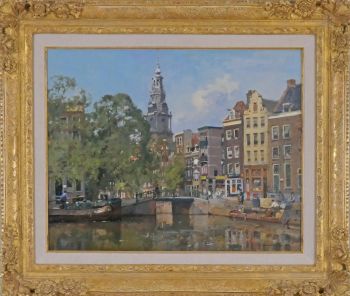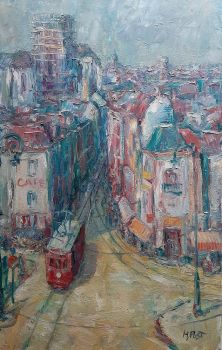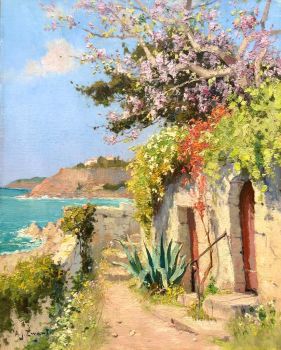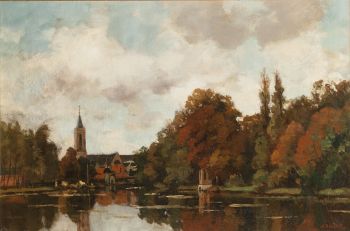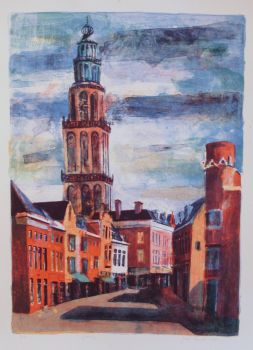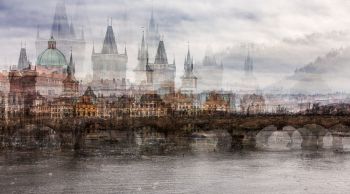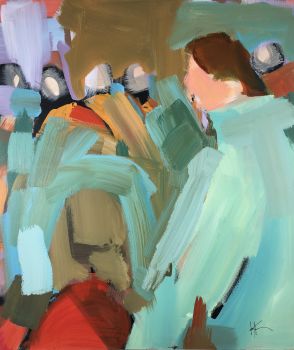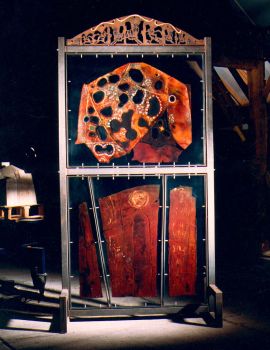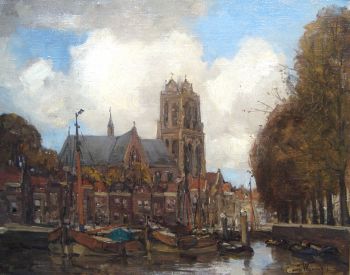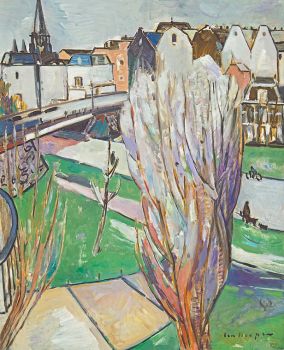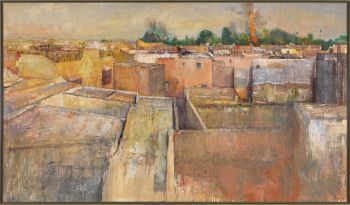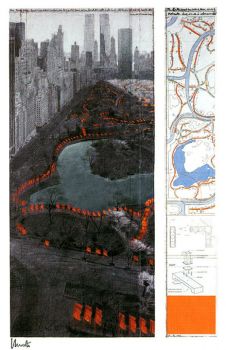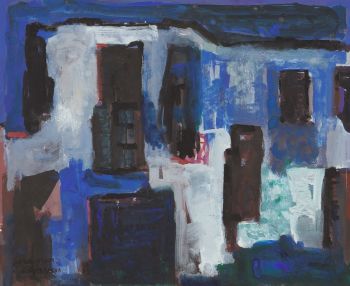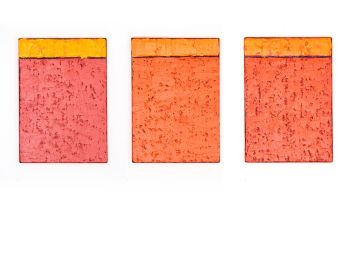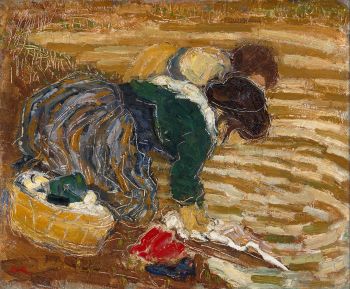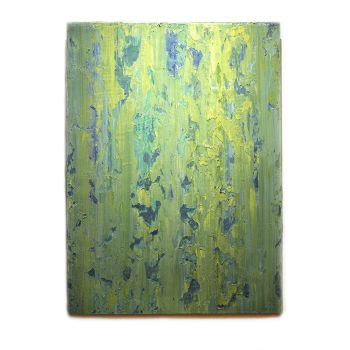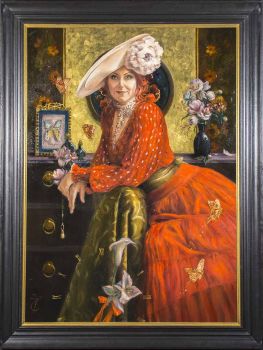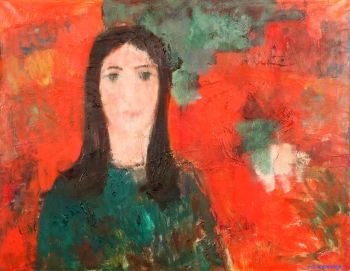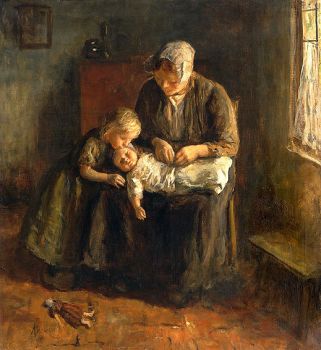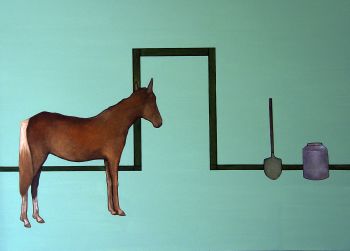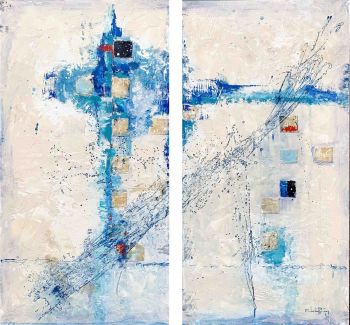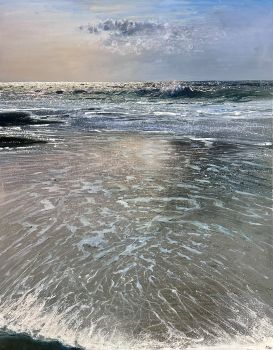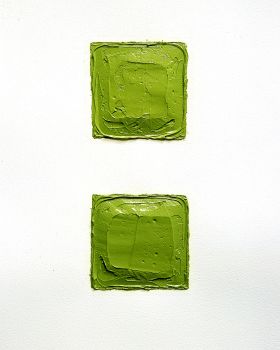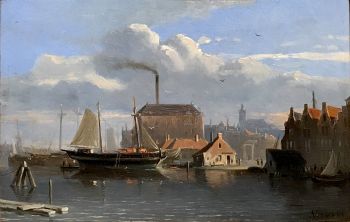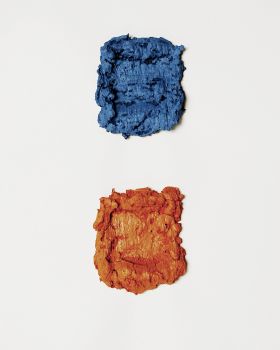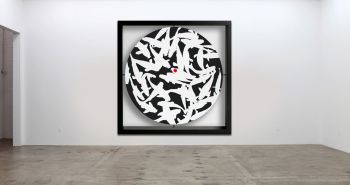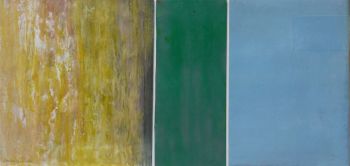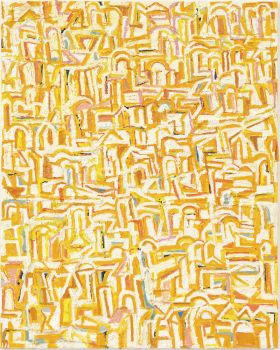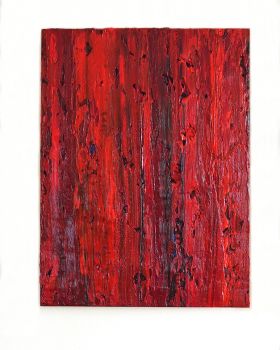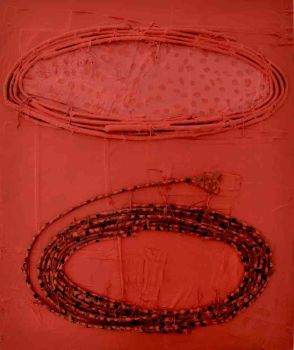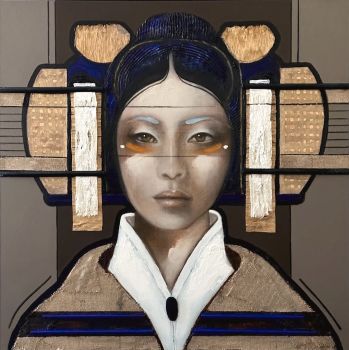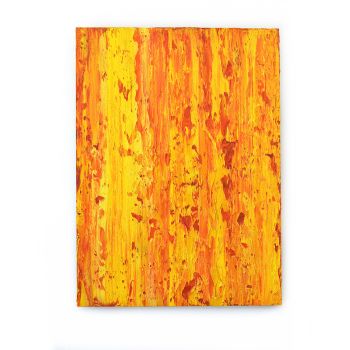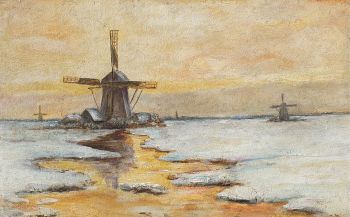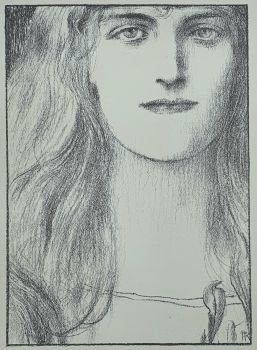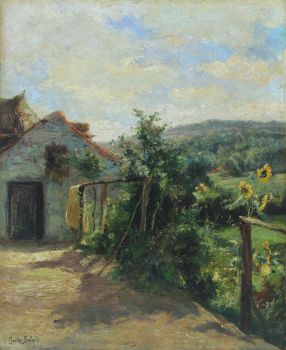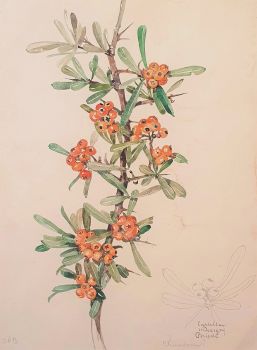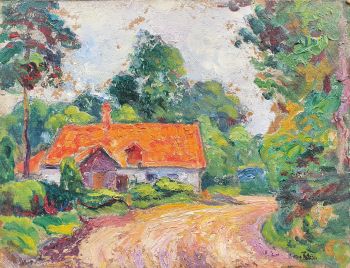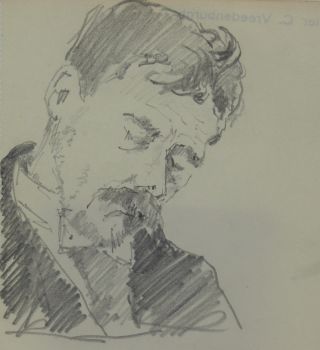View on the Church of Our Lady in Veere – Gezicht op de Grote Kerk in Veere 1910 - 1920
Willem Wenckebach
CanvasOil paintPaint
65 ⨯ 81 cm
ConditionExcellent
€ 3.800
Klooster Fine Art
- About the artwork[EN]
Willem Wenckebach probably painted this view on the Church of Our Lady around 1917, around the time he specialized in painting, after his initial success as an illustrator. The work shows the small town of Veere in the Dutch province Zeeland, seen from the North-West. On the foreground, a shepherd walks his flock out of town. In the background the Church of Our Lady – or Grote Kerk – dominates the landscape.
Wenckebach painted the view in a luminist style, emphasizing the effect of the light of the morning sun lighting the church. The technique he used is akin to the impressionists, which shows most clearly in his loose and varied brushwork. Especially in the sky but also throughout the painting he displays his mastery of colour.
Veere is situated on the coast and historically was a successful trade town on the former island of Walcheren. In the early twentieth century the region became a popular destination for artists to visit, particularly the city of Domburg. The seaside resort attracted artists like James McNeill Whistler, Piet Mondriaan and Jan Toorop.
[NL]
Willem Wenckebach schilderde dit gezicht op de Onze-Lieve-Vrouwekerk in Veere vermoedelijk rond 1917. Dat is rond de tijd dat hij zich specialiseerde in schilderen, na zijn aanvankelijke succes als illustrator. Het schilderij toont het kleine, Zeeuwse plaatsje Veere, vanaf het Noordwesten gezien. Op de voorgrond loopt een herder met zijn kudde het dorp uit. De achtergrond word gedomineerd door de aanblik op de Onze-Lieve-Vrouwe- of Grote Kerk.
Wenckebach schilderde het werk in lijn met de luministen, waarbij hij het effect van het ochtendlicht op de kerk benadrukte. De schildertechniek die hij gebruikte is verwant aan het werk van de impressionisten, wat vooral terugkomt in zijn vrije en gevarieerde penseelvoering. Voornamelijk de lucht, maar ook verspreid door het schilderij laat hij veel gevoel voor kleur zien.
Veere is gesitueerd aan de kust, en was een historisch belangrijke handelsstad op het toenmalige eiland Walcheren. In de vroege twintigste eeuw werd de regio een gewilde bestemming voor kunstenaars – met name het nabij gelegen Domburg. Die kustplaats trok grote kunstenaars als James McNeill Whistler, Piet Mondriaan en Jan Toorop aan. - About the artist
Ludwig Willem Reymert Wenckebach, better known as Willem Wenckebach, was a versatile Dutch artist. He worked as a painter, illustrator, book binding designer and graphic artist, and was best known for his watercolors for Jac's Verkade albums. P. Thijsse, in addition to collaborations with Jan Voerman Jr. and Jan van Oort.
In 1878 Wenckebach apprenticed with D.P. van Lokhorst and Jacob Eduard van Heemskerck van Beest in Utrecht, after which he studied in Paris between 1880 and 1884 thanks to a Royal Grant. Back in the Netherlands, he became a member of Genootschap Kunstliefde and developed a friendship with Anthon van Rappart, with whom he often painted 'en plein air'.
Wenckebach, known for his landscape paintings, was also friends with figures such as Hendrik Petrus Berlage and Antoon Derkinderen. He exhibited regularly at Arti et Amicitiae and had solo exhibitions at art dealers from 1910. His work, mainly in the style of the Hague School, focused on landscapes in areas such as Wolfheze, Drenthe and the Dutch dunes.
After 1917 Wenckebach focused entirely on painting and stopped illustrating. He also taught at the Applied Arts School in Haarlem, with students such as his cousin Oswald Wenckebach and others such as Rie de Balbian Verster-Bolderhey and Johan Briedé.
Are you interested in buying this artwork?
Artwork details
Related artworks
- 1 - 4 / 24
Aris Knikker
Riverview with a village (Kortenhoef, Netherlands)1887 - 1962
Price on requestKunsthandel Pygmalion
Jan Toorop
NETTENBOETSTERS IN DE SCHADUW VAN EEN BOMSCHUIT1891
Price on requestStudio 2000 Art Gallery
1 - 4 / 24- 1 - 4 / 24
- 1 - 4 / 24
- 1 - 4 / 12

